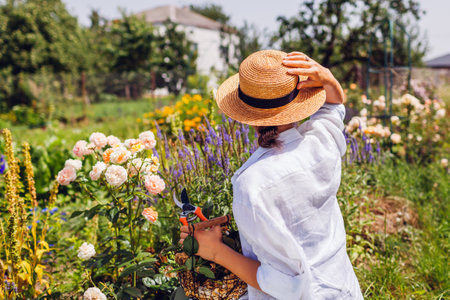Understanding the British Formal Garden
The British formal garden has a rich history, rooted in centuries of landscape tradition and social culture. Emerging during the Tudor period and reaching its height in the 17th and 18th centuries, these gardens were inspired by European influences, notably from France and Italy. However, they soon developed their own distinctive character, adapting to the unique climate, tastes, and architecture found across Britain.
Key characteristics of a British formal garden include symmetrical layouts, geometric shapes, and carefully planned pathways. Hedges, topiary, clipped lawns, and classical features such as fountains or statues are commonly used to create an atmosphere of order and elegance. Parterres—decorative flower beds outlined with low box hedges—are another signature element, adding structure and colour to the design.
The enduring appeal of the formal garden lies in its timeless beauty and sense of tranquillity. Whether attached to a grand country house or a modest suburban home, these gardens offer a peaceful retreat while reflecting a proud tradition of horticultural excellence. For many British homeowners, planning a formal garden is not just about aesthetics but also about preserving a piece of cultural heritage that continues to inspire new generations.
Choosing the Best Site for Your Garden
Before you begin designing your formal garden, it’s essential to select the most suitable location on your property. A well-chosen site will help your garden thrive and capture the timeless charm of British landscaping. Here’s what to consider:
Sunlight and Aspect
The classic British formal garden often features sun-loving plants such as roses, lavender, and box hedging. Observe your outdoor space throughout the day to identify sunny, partially shaded, or fully shaded areas. Most formal gardens benefit from a spot that receives at least 6 hours of sunlight daily, ideally facing south or west for maximum light exposure.
Soil Quality
British soil types can vary greatly, from heavy clay to light sandy loam. Testing your soil helps determine what amendments you may need for optimal plant health. Use a simple soil test kit or consult a local garden centre. Improving soil with well-rotted compost or manure is a traditional British method to boost fertility and structure.
Key Factors for Site Selection
| Factor | Why It Matters | British Tips |
|---|---|---|
| Sunlight | Ensures healthy growth for most formal plants | Aim for south or west-facing spots |
| Soil Type | Affects drainage and nutrient availability | Add compost; avoid waterlogged areas typical in some British gardens |
| Shelter | Protects plants from wind and frost | Use traditional hedges or walls as windbreaks |
| Proximity to House | Makes maintenance and enjoyment easier | Classic designs often align with main windows for year-round views |
| Level Ground | Easier layout for geometric patterns and paths | Terrace sloped sites using brick or stone in keeping with British style |
Selecting the right location is the foundation of a successful formal garden. By considering these classic British elements, you’ll set the stage for a beautiful, structured landscape that complements your home and lifestyle.

3. Designing Your Garden Layout
When planning a formal garden for a British home, the layout is key to achieving that classic, timeless look. Begin by considering traditional geometric patterns such as rectangles, squares, or circles. These shapes form the backbone of many historic British gardens, creating clear lines and symmetry that define the space.
Geometric Patterns
Symmetry is at the heart of a formal garden. Use straight hedges, clipped boxwood borders, or low yew to outline beds in precise shapes. Parterres—ornamental beds edged with hedging—are a popular choice, often arranged in mirrored or repeating designs for visual harmony.
Pathways
Pathways are essential for both structure and style. Opt for gravel, brick, or stone paths laid out in straight lines or gentle curves to guide movement through the garden. Pathways should intersect at focal points and help divide the garden into distinct sections, making each area feel special and intentional.
Focal Points
No British formal garden is complete without a striking focal point. This could be a sundial, ornate bench, topiary feature, or classic statue placed at the centre of a parterre or at the end of a vista. Focal points draw the eye and add character while anchoring the garden’s overall design.
Tips for Success
Keep plant heights consistent within each section for a tidy appearance. Repeat shapes and materials to tie different areas together, and always consider views from windows or terraces when positioning pathways and features. With careful planning, you can create an elegant and inviting outdoor space that feels distinctly British.
4. Selecting Plants and Features
Choosing the right plants and features is essential for creating an authentic British formal garden. Start by considering classic British plant varieties that thrive in local conditions and contribute to the timeless elegance of your outdoor space.
Quintessentially British Plants
| Plant Type | Popular Choices | Key Features |
|---|---|---|
| Hedges | Yew, Box (Buxus), Privet | Evergreen, dense foliage, ideal for shaping and structure |
| Flower Borders | Lavender, Roses, Delphiniums | Fragrant, colourful blooms, quintessential cottage garden style |
| Trees | Hornbeam, Crabapple, English Oak | Provide height, shade, and seasonal interest |
| Ground Cover | Thyme, Alchemilla mollis, Primrose | Add texture and fill gaps between larger plantings |
Formal Garden Features to Consider
- Hedging: Neatly clipped hedges are fundamental to a formal layout. Use yew or box to define borders or create topiary shapes for extra visual interest.
- Lawn: A well-kept lawn serves as a focal point and enhances symmetry. Traditional British lawns often have crisp edges and may be bordered with low hedging or flower beds.
- Paving: York stone or brick paths help structure the space and guide movement throughout the garden.
- Water Features: Incorporate a central pond, reflective pool or ornate fountain to introduce tranquillity and elegance. Simple stone birdbaths can also add a classic touch.
- Sculptures and Urns: Placing statues or decorative urns at key points reinforces the formal aesthetic and draws the eye through the garden.
Tips for Achieving Balance
A successful formal garden balances soft planting with crisp structure. Pair lush borders with geometric hedging, and position water features so they anchor sight lines or serve as focal points from main viewing areas.
5. Essential Maintenance and Care
To keep a formal garden at its most elegant, regular maintenance is absolutely vital. The traditional British formal garden is all about order, symmetry, and crisp lines, so your routines should reflect this ethos.
Pruning for Shape and Structure
Pruning is essential to maintain the sharp outlines of hedges, topiary, and feature shrubs. Use sharp shears or secateurs to trim box hedges (Buxus), yew (Taxus), and other evergreens in late spring or early summer. This helps them keep their neat shapes throughout the year. For flowering shrubs, prune after flowering to encourage healthy growth while preserving their natural form.
Mowing and Lawn Edging
A well-kept lawn is central to any British formal garden. Mow regularly during the growing season—generally from March to October—using a mower set to the correct height for your grass type. Don’t forget to edge your lawns with a half-moon tool or lawn edging shears; crisp edges give the garden that professional, tidy finish typical of English gardens.
Seasonal Tasks
Adapt your care routines as the seasons change. In spring, feed lawns and borders with an appropriate fertiliser and mulch beds to retain moisture. Summer requires vigilant deadheading of spent blooms and consistent watering during dry spells. Come autumn, clear fallen leaves promptly to prevent smothering grass and tidy up perennials ready for winter rest. Winter is perfect for structural pruning and planning new additions for next year.
Pest and Disease Management
Keep an eye out for common British garden pests such as aphids, slugs, and box blight. Regular inspection allows you to catch problems early—remove pests by hand where possible or use environmentally friendly treatments if necessary.
Consistency Is Key
The hallmark of a beautiful formal garden is ongoing attention to detail. By sticking to these maintenance routines, your British home’s formal garden will remain a source of pride and timeless elegance throughout the year.
6. Adding British Touches
To truly capture the spirit of a formal British garden, it’s essential to weave in traditional regional elements that reflect local heritage and charm. Start by incorporating classic topiary—clipped box or yew hedges shaped into spheres, cones, or even whimsical animal forms. These structured evergreens are a hallmark of British garden design and add year-round interest. Next, consider placing statuary or stone ornaments throughout your garden. Stone urns, sundials, or small fountains lend an air of timeless elegance and evoke the grandeur of historic British estates. Don’t forget the importance of benches; painted wooden or wrought iron seating tucked beneath an arbour or along a path invites quiet reflection and social gatherings alike. Opt for styles with a classic feel, such as the Lutyens bench or simple slatted seats, to blend seamlessly with the formal layout. By thoughtfully adding these touches, you’ll give your formal garden an unmistakable British identity that celebrates both tradition and beauty.


